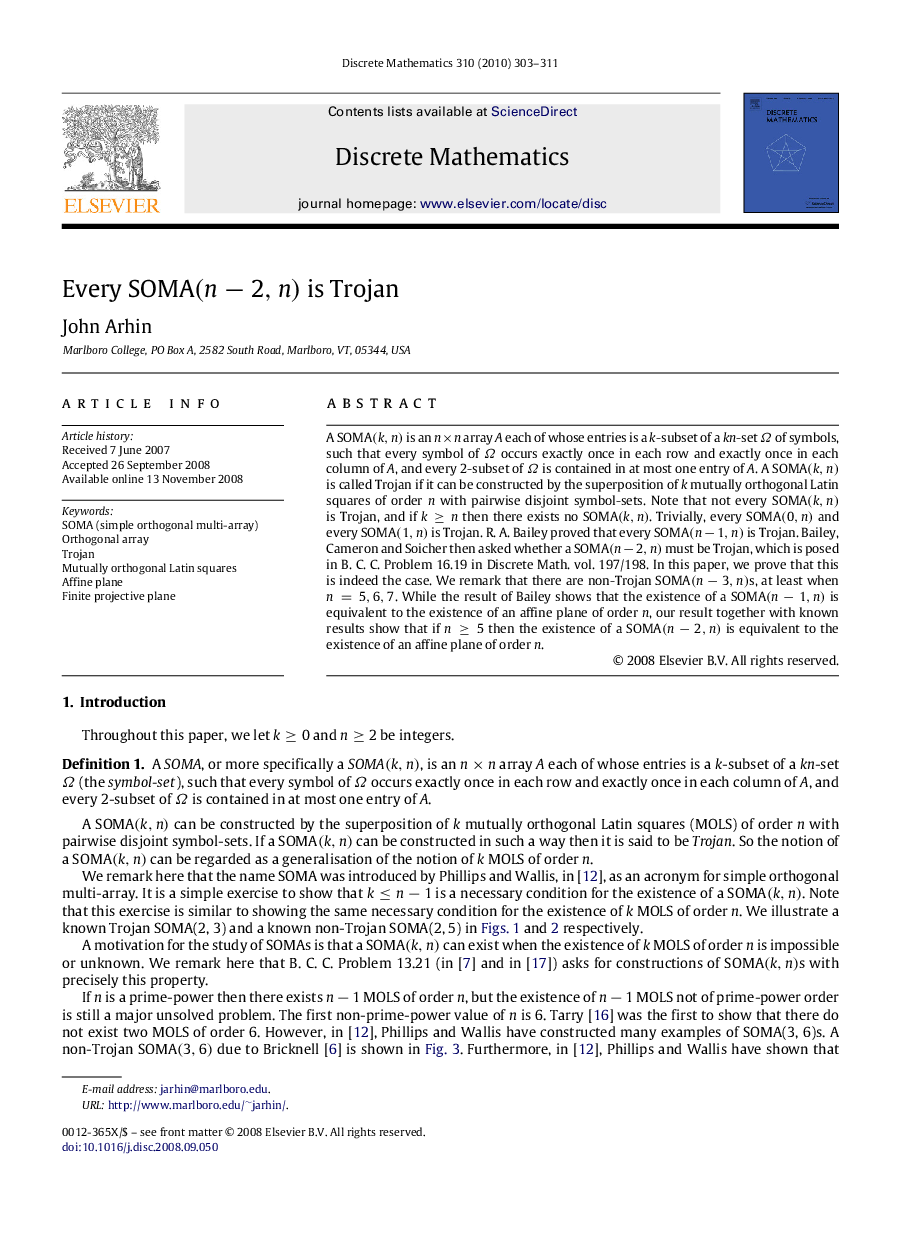| Article ID | Journal | Published Year | Pages | File Type |
|---|---|---|---|---|
| 4649171 | Discrete Mathematics | 2010 | 9 Pages |
A SOMA(k,n) is an n×nn×n array AA each of whose entries is a kk-subset of a knkn-set ΩΩ of symbols, such that every symbol of ΩΩ occurs exactly once in each row and exactly once in each column of AA, and every 2-subset of ΩΩ is contained in at most one entry of AA. A SOMA(k,n) is called Trojan if it can be constructed by the superposition of kk mutually orthogonal Latin squares of order nn with pairwise disjoint symbol-sets. Note that not every SOMA(k,n) is Trojan, and if k≥nk≥n then there exists no SOMA(k,n). Trivially, every SOMA(0,n) and every SOMA(1,n) is Trojan. R. A. Bailey proved that every SOMA(n−1,n) is Trojan. Bailey, Cameron and Soicher then asked whether a SOMA(n−2,n) must be Trojan, which is posed in B. C. C. Problem 16.19 in Discrete Math. vol. 197/198. In this paper, we prove that this is indeed the case. We remark that there are non-Trojan SOMA(n−3,n)s, at least when n=5,6,7n=5,6,7. While the result of Bailey shows that the existence of a SOMA(n−1,n) is equivalent to the existence of an affine plane of order nn, our result together with known results show that if n≥5n≥5 then the existence of a SOMA(n−2,n) is equivalent to the existence of an affine plane of order nn.
